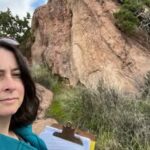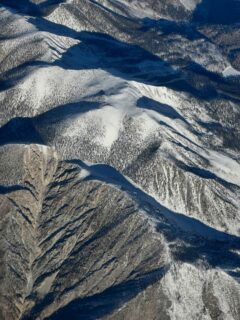With graduate student Haotian Xu, we modified our phase velocity inversion code and adapted it to Mars to deal with complications pertaining to InSight. We then tested it in a blind test and compared its performance with other methods.
We modified our original algorithm to help account for and propagate the large uncertainties in the source parameters in order to reduce the risk of mapping errors in the source into the interior models. Source parameter uncertainties are larger on Mars than on Earth due to the fact that there is only one seismic station. Estimates for these parameters can also be biased by the choice of the reference model, which is not well known for Mars. The reference interior model can additionally affect the surface wave measurements made with our technique due to the non-linearity of the problem. With synthetic tests, we demonstrated that having good prior constraints on the Moho depth is essential because the surface wave dispersion data alone cannot distinguish between models of different crustal thicknesses, which could lead to biased interpretations of models. This emphasizes the need to get reliable constraints on the crust from independent methods such as receiver function analysis before using any surface wave data to constrain mantle structure. Finally, we demonstrated that, even if we allow propagation of source uncertainties into the solution, our technique can recover the true model well at most depths down to 400 km as long as we have a good reference model. We also found that the fundamental mode surface wave dispersion can be reliably measured at all periods considered (25s-50s), which is identical to what is found for Earth. We also found, similar to Earth, that the higher mode surface waves can be reliably measured at the shortest periods (< 35s in this case), but this is sufficient to constrain structure down to 300-400 km depth.
Our code was then tested against a blind dataset (Drilleau et al., 2020). In this paper, we showed that, while it can recover the input model that was used to generate the blind dataset and it performs as well as the other techniques presented in the paper, our method requires a good starting reference model.
More details can be found in:
Xu, H., Beghein, C., Panning, M.P., Drilleau, M., Lognonné, P., van Driel, M., Ceylan, S., Böse, M., Brinkman, N., Clinton, J., Euchner, F., Giardini, D., Horleston, A., Kawamura, T., Kenda, B., Murdoch, N., and Stähler, S. (2020), Measuring Fundamental and Higher Mode Surface Wave Dispersion on Mars From Seismic Waveforms, Earth and Space Science, 8, e2020EA001263, doi:10.1029/2020EA001263
Drilleau, M., Beucler, E., Lognonné,P., Panning, M.P., Knapmeyer-Endrun, B. Banerdt, W.B., Beghein, C., Ceylan, S., van Driel, M., Joshi, R., Kawamura,T., Khan, A., Menina, S., Rivoldini, A., Samuel, H., Stahler, S., Xu, H., Bonnin, M., Clinton, J., Giardini, D., Kenda, B., Lekic, V., Mocquet, A., Murdoch, N., Schimmel, M., Smrekar, S.E., Stutzmann, E., Tauzin, B., Tharimena, S. (2020), MSS/1: Single-station and single-event marsquake inversion, J. Geophys. Res.-ESS, 7 (12), e2020EA001118, doi:10.1029/2020EA001118 – PDF preprint































































